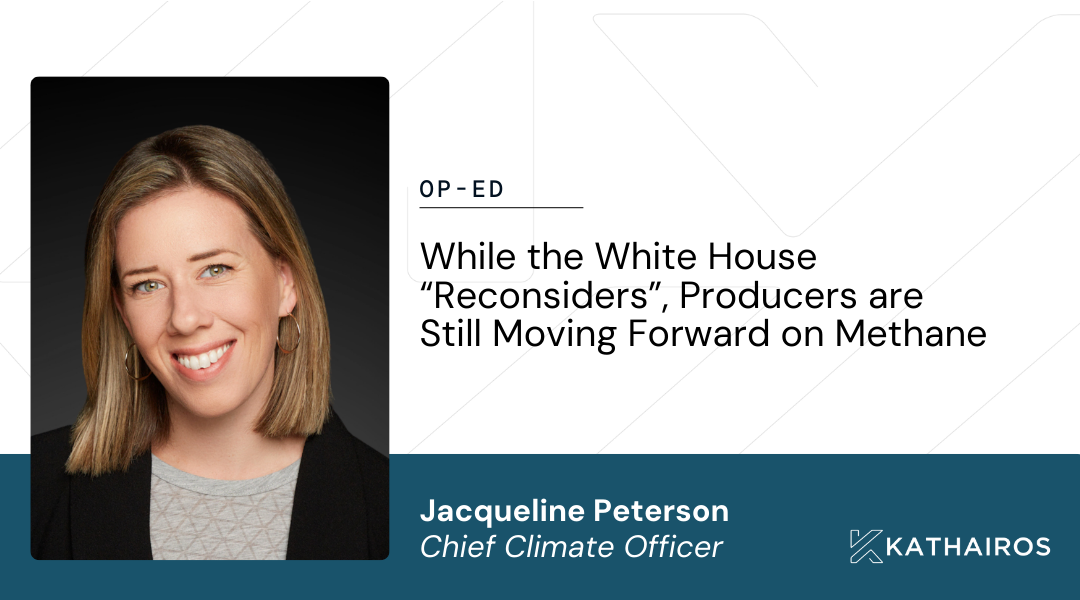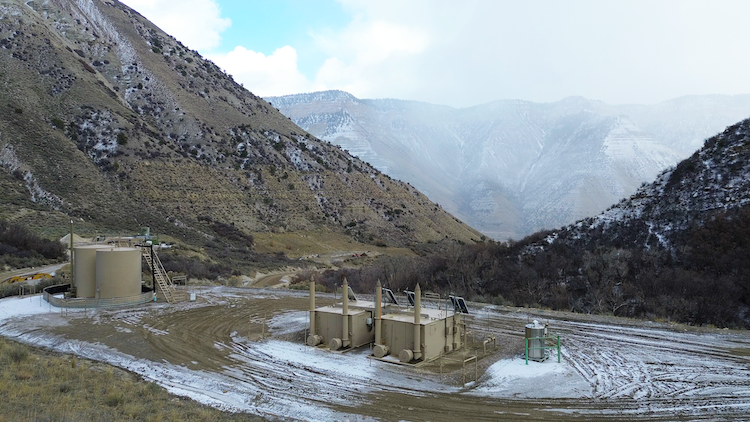
Kathairos has emerged as the leading North American solution for methane elimination from pneumatics, with more than 1,000 systems in operation across North America and over 40 major oil and gas producer partners.
In this post
Canada needs at least $100 billion more in annual investments to reach its goal of a net-zero economy by 2050, according to the Liberals’ 2022 budget.
And while Finance Minister Chrystia Freeland’s spending plan commits an additional $12.5 billion to the fight against climate change, the budget also acknowledges that the federal government can’t reach its environmental targets on its own.
“Governments cannot do this alone. To prosper in the face of challenges of such great scale, we must find new ways of pooling our capabilities across the public sector, the private sector, and across industries from coast-to-coast-to-coast,” the budget documents, released Thursday read.
“On the fight against climate change alone – to build a net-zero economy by 2050 – Canada will need between $125 billion and $140 billion of investment every year over that period. Today, annual investment in the climate transition is between $15 billion and $25 billion. No one government can close that gap.”
That’s the government’s framing for a $15-billion “Canada Growth Fund” – a new arms-length “public investment vehicle” that hopes to raise $3 in private sector buy-in for every $1 in public money.
The government hopes the Canada Growth Fund will achieve three central goals – reducing emissions to help the country reach its climate goals, to bolster “low-carbon industries and new technologies” and boost their export, and to “support the restructuring of critical supply chains” important to the future economy.
But details about how the fund will actually be structured will wait until the government’s fall economic update, pending consultations with experts both in Canada and abroad.
Sahir Khan, executive vice president at the University of Ottawa’s Institute for Fiscal Studies and Democracy, said the fund’s success will depend on those details – but expressed some skepticism.
“Attracting private capital with a public interest isn’t the easiest thing to do,” said Khan, who provided budget analysis for Global News.
“Pardon me for a little bit of cynicism for saying we have to wait to see how this thing is going to actually pull this off, because it hasn’t yet shown itself to be a working formula,” with the infrastructure bank, Khan added.
While the budget acknowledged that the federal government can’t hit its climate change goals without private sector buy-in, it also committed an additional $12.448 billion in public money to various climate-oriented initiatives – most notably in incentives and supports for Canadians buying zero-emission vehicles.
That includes $1.7 billion over five years to extend Transport Canada’s incentives for zero-emission-vehicles program until March 2025. The program provides incentives of up to $5,000 for Canadians who buy or lease zero-emission vehicles.
The budget also proposed $547.5 million over four years to launch a similar program for medium- and heavy-duty zero-emission vehicles, as well as $33.8 million over five years to assist provinces and territories with developing regulations and conduct safety testing for long-haul zero-emissions trucks.
Hadrian Mertins-Kirkwood, a senior researcher with the Canadian Centre for Policy Alternatives, said in a statement that while electric vehicles are “one piece of the climate puzzle … we need to go bolder if we’re going to reach net-zero emissions by 2050.”
The government is also designing a new investment tax credit for businesses investing in clean technology, but will wait until the fall economic statement to unveil details.
A measure with more potential for controversy in Thursday’s budget was a refundable investment tax credit for businesses buying carbon capture and storage technology. While some environmental groups and governments look at the technology with optimism, others are much more skeptical – Greenpeace, for instance, has referred to it as a “scam.”
The tax credit would provide generous allowances for “direct air capture projects” and other equipment aimed at capturing CO2 emissions, as well as equipment for “transportation, storage and use.” The tax credit tapers off sharply after 2030, which the government suggests would create a sense of urgency for companies and industries hoping to take advantage of the program.
“New tax breaks for carbon capture technology are yet another subsidy for fossil fuel companies … at exactly the time when we should be actively winding down oil and gas production,” said Mertins-Kirkwood with the CCPA.
“The federal government wants it both ways on energy: to use less fossil fuels at home while producing even more fossil fuels for international markets. Climate policies that don’t curtail fossil fuels at the source are not compatible with a climate-safe future.”
But Clean Prosperity, a climate-oriented think tank, called the technology “essential for helping Canada achieve its climate goals, as well as creating good jobs and clean economic growth.”
“If the Emissions Reduction Plan was the blueprint then this budget lays down the first few floors of the building,” said Michael Bernstein, Clean Prosperity’s executive director, in a statement.
Explore more posts from Kathairos
.jpg)
Decarb Digest, Issue 01: Discover Why Energy Leaders Aren’t Waiting on Washington

Op-Ed: While the White House “reconsiders”, producers are still moving forward on methane

